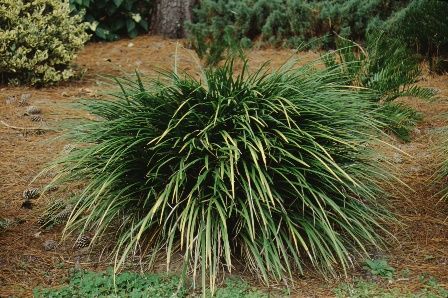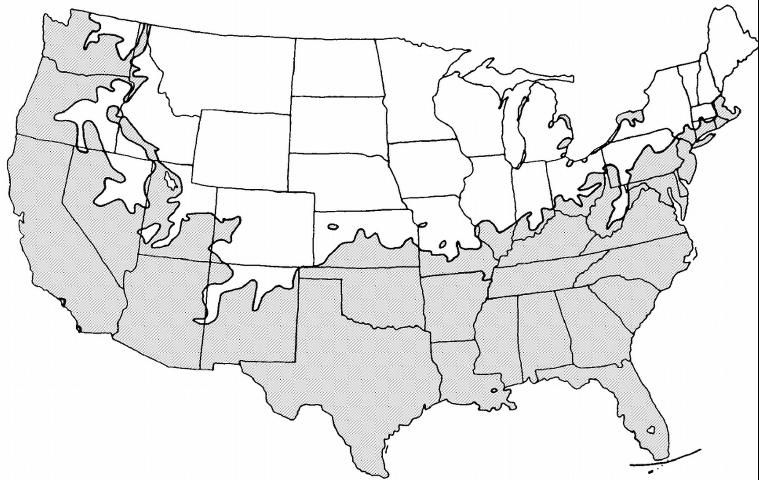Introduction
This large, clumping grass-like perennial makes an attractive, dark green groundcover and is accented with spikes of lilac purple blooms during summer months. Though not actually spreading by underground stems, an individual plant after several years can reach 24 inches in width by suckering at the base and will quickly cover an open area. Plant on 18inch centers for the best groundcover effect. Evergreen giant liriope can also be used as an edging along walks and other areas. Plant liriope to create a fine-textured, gentle ground cover which will sustain itself for many years. Large areas planted in liriope lend a soothing effect to any landscape.

Credit: Edward F. Gilman, UF/IFAS
General Information
Scientific name: Liriope muscari 'Evergreen Giant'
Pronunciation: luh-RYE-oh-pee mus-KAR-ree
Common name(s): 'Evergreen Giant' lilyturf, 'Evergreen Giant' liriope
Family: Liliaceae
Plant type: perennial; herbaceous; ornamental grass
USDA hardiness zones: 6 through 10 (Figure 2)
Planting month for zone 7: year round
Planting month for zone 8: year round
Planting month for zone 9: year round
Planting month for zone 10: year round
Origin: not native to North America
Invasive potential: not known to be invasive
Uses: mass planting; edging; naturalizing; small parking lot islands (< 100 square feet in size); medium-sized parking lot islands (100-200 square feet in size); large parking lot islands (> 200 square feet in size)
Availability: generally available in many areas within its hardiness range

Credit:
Description
Height: 1 to 2 feet
Spread: 1 to 2 feet
Plant habit: upright
Plant density: moderate
Growth rate: moderate
Texture: fine
Foliage
Leaf arrangement: most emerge from the soil, usually without a stem
Leaf type: simple
Leaf margin: entire
Leaf shape: linear
Leaf venation: parallel
Leaf type and persistence: evergreen
Leaf blade length: 12 to 18 inches
Leaf color: green
Fall color: no fall color change
Fall characteristic: not showy
Flower
Flower color: lilac; purple
Flower characteristic: summer flowering
Fruit
Fruit shape: round
Fruit length: less than 0.5 inch
Fruit cover: fleshy
Fruit color: black
Fruit characteristic: showy
Trunk and Branches
Trunk/bark/branches: not applicable
Current year stem/twig color: not applicable
Current year stem/twig thickness: not applicable
Culture
Light requirement: plant grows in part shade/part sun; plant grows in the shade
Soil tolerances: alkaline; clay; sand; acidic; loam
Drought tolerance: moderate
Soil salt tolerances: unknown
Plant spacing: 18 to 24 inches
Other
Roots: not applicable
Winter interest: no special winter interest
Outstanding plant: not particularly outstanding
Pest resistance: no serious pests are normally seen on the plant
Use and Management
Evergreen giant liriope enjoys more sun than other liriopes. Growth in full shade is a bit thin but acceptable. Growth is best on rich, moist, well-drained soils but the plant will accept much less hospitable conditions in most regions. In the hottest areas of the south, however, full sun plants tend to brown at the tips and die from heat stress. Plants should be fertilized once or twice a year but require little care otherwise.
Propagation is by division of the clumps or by seed.
Pests and Diseases
No diseases are of major concern.